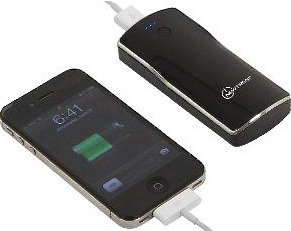After I discovered the ease and convenience of recharging batteries, with our Goal Zero Nomad 7 Solar Panel and Guide 10 Power Pack, I decided we needed to expand out into the world of rechargeable batteries. This was a new thing for me, the rechargeable batteries that I was used to were the old fashioned kind that were expensive, didn’t last long, developed memories, and over-all not worth the hassle. The new kind can be charged over 1500 times and developing memory is no longer an issue.
I also recently learned about this topic on The Survival Podcast when Jack interviewed Steven Harris on Dealing with a Large Scale Blackout. Steven discussed how people could have been better prepared for the recent east coast power outage, and of course any future power outages, in some very simple ways with some very straight-forward products.
Steven Harris is a guru of all things ‘energy’. Yea he’s slightly goofy and tends to ramble a bit, but his knowledge and ability to easily explain the complex world of energy is incredible.
The products that he recommended–not his products, just ones he’s thoroughly tested and provided links to on his site: SOLAR1234.com–that we chose to order were:
- Powerex Eight Cell Smart Charger (MH-C800S). An 8 AA or AAA battery charger that charges in one to two hours; it also has a large LCD screen showing the status of each battery. This will give us an easy, relatively low energy draw, way to have an almost infinite supply of battery power.
- Sanyo 1500 eneloop 8 pack AA, and AAA, NiHM Precharged Rechargeable Batteries. (For use with the above charger.) We ordered one of each, Costco also carries these and we can get more there after we test them out. These can also be recharged with our Goal Zero Solar Panel and Power Pack.
- Duracell 800 Watt DC to AC Digital Power Inverter (813-0807). It runs at 150 watts through your car’s cigarette lighter, or 800 watts when clamped directly to your car’s battery (comes with cables for each method). It has a display that shows: voltage in, voltage out, and watts (power) that you are currently drawing. With this your car becomes an improvised generator and power is stored in your car’s battery (800 watts is enough to power your refrigerator).
 And the item we’re most excited about:
And the item we’re most excited about:
- Trent iTorch IMP52D 52mAh External Battery Charger (for ANYTHING USB). It’s a portable rechargeable lithium battery that holds enough energy to completely charge a dead iPhone 3.5 times! We ordered one for both Sarah and I (and Sarah’s Dad, who happened to be here at the time). We’ve been searching for a product like this to add to our get-home bags (GHB) and this one comes very highly recommended. I plan on thoroughly testing, then reviewing the iTorch.
 On another topic, we had to find a way to keep our rabbits cool this week. While I know we won’t get much sympathy from the rest of the country, it actually got hot here in Western Washington. We had temperatures in the mid-90s, which is really hot for us (keep in mind hardly anyone here has air-conditioned homes). To put that temperature in local perspective, I had a co-worker who would say, “Any time it gets above 80 degrees it’s god’s way of showing me what hell would be like.” Yes, the Pacific Northwest is temperate. Anyway with the “hot” temperatures we had to find a way to keep our (Western Washington, not used to the heat) rabbits cool. Sarah did some research and found one of the easiest ways is to put a frozen 2-liter water bottle into each of their hutches and they can lean against it if they get hot. It seemed to work well, the rabbits looked less agitated and seemed to be panting less.
On another topic, we had to find a way to keep our rabbits cool this week. While I know we won’t get much sympathy from the rest of the country, it actually got hot here in Western Washington. We had temperatures in the mid-90s, which is really hot for us (keep in mind hardly anyone here has air-conditioned homes). To put that temperature in local perspective, I had a co-worker who would say, “Any time it gets above 80 degrees it’s god’s way of showing me what hell would be like.” Yes, the Pacific Northwest is temperate. Anyway with the “hot” temperatures we had to find a way to keep our (Western Washington, not used to the heat) rabbits cool. Sarah did some research and found one of the easiest ways is to put a frozen 2-liter water bottle into each of their hutches and they can lean against it if they get hot. It seemed to work well, the rabbits looked less agitated and seemed to be panting less.
What did you do?















